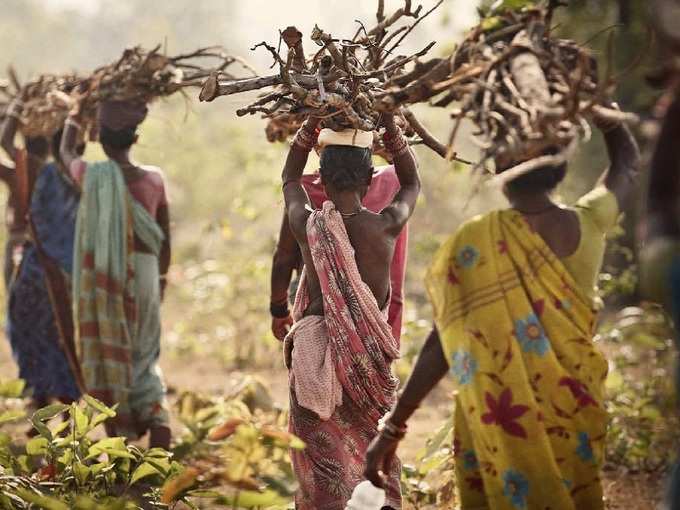 I sat on a chair with a paper in my hand trying to help the girl solve a Class II level double digit multiplication problem. She was shy and did not say much. She tried solving it on the sheet but there was no progress. I gave her hints, patiently waited for her to respond to that. But after a couple of minutes she gave up. Her father kept a close watch on the proceedings, slightly amused at my attempts to draw her attention towards the task at hand. I could see her mother standing at the other end of the kutcha house not very pleased with her daughter’s performance. She had been very proud of the fact that her daughter was in Class VIII in the local government school. Very few girls in the village went to school at this age. This was Chitgunwa, a small village near Jhansi where I had been assigned to conduct a survey on the level of public
I sat on a chair with a paper in my hand trying to help the girl solve a Class II level double digit multiplication problem. She was shy and did not say much. She tried solving it on the sheet but there was no progress. I gave her hints, patiently waited for her to respond to that. But after a couple of minutes she gave up. Her father kept a close watch on the proceedings, slightly amused at my attempts to draw her attention towards the task at hand. I could see her mother standing at the other end of the kutcha house not very pleased with her daughter’s performance. She had been very proud of the fact that her daughter was in Class VIII in the local government school. Very few girls in the village went to school at this age. This was Chitgunwa, a small village near Jhansi where I had been assigned to conduct a survey on the level of public As India gets ready for the
Education is one of the key requirements to convert India’s demography into productive human capital. While enough emphasis has been laid on the access of education resulting in Gross Enrolment Ratio of 104.3% , the quality of education remains dismal. India has been consistently spending close to 4-5% of the total budget on education , but the proportion spent on primary education has been falling since last three years (Exhibit 1). The budgetary allocation for Mid-Day Meal Programme was reduced from INR 13,215 cr (2014-15) to INR 9,236 cr (2015-16) . The spend on the quality of education which includes ‘activities to improve learning, such as learning enhancement programmes and innovation grants’ in Sarva Shiksha Abhiyan and teacher training is also extremely low (Exhibit 2).
India needs a budget where adequate allocation is made to improve the quality of primary education. The first step would be determining the nature and magnitude of quality improvement required. This can be achieved through regular and sound measurement of outcomes. Another area which requires greater budgetary intervention is teacher training. Average teacher training spend was less than an appalling 3% of the elementary education budget over the past 6 years. This needs to change. India’s primary education curriculum has been severely criticised as being over ambitious and unrealistic. This must be reviewed through a comprehensive research exercise. The curriculum must have both academic and vocational components which could address the economics of retention in secondary and higher education. There must be emphasis on innovation and reasoning which could go a long way in eliminating 140 characters of opinion building process. The government started the “Beti Bachao Beti Padhao” scheme through a corpus fund of INR 100cr .There is also a Sukanya Samriddhi Scheme to save for girl child’s education. But we need to do more. A comprehensive action plan with regular evaluation of the outcomes will go a long way in proper implementation of the schemes. This must be backed with adequate financial support through the budgetary allocation.
The other area which would matter for the mother and her daughter would be access to
The focus should be on preventive healthcare as it serves the twin purpose of decreasing the government spending on secondary and tertiary care and the out of the pocket expenditure which results in severe health shocks leading to acute financial distress. India ranks third in the world in the out of the pocket spending on healthcare. The government’s flagship programme Swacch Bharat was criticised by CAG recently for failing to achieve the desired targets due to weak implementation. “Audit clearly reveals the failure of the sanitation programmes in achieving the envisaged target” it pointed out. In FY 2015-2016 INR 3,265 cr was allocated for Swacch Bharat Mission which was 27% hike from the previous year . Although allocations had increased, a large sum of money remained unspent. There are issues at multiple levels – evaluating a scheme on the number of toilets built is flawed. The CAG report mentions “more than 30% of individual household latrines remain non-functional”10. Building toilets is not the solution until focus is shifted on solid waste management system and treatment plants. It is vital to understand the link between front end (toilets) and back end (collection and treatment) so that appropriate resource allocation can be made in the upcoming budget.
India stands at a very crucial juncture in its journey. It has been doing well on certain fronts but a lot more needs to be done. A budget which brings the focus back on education and health is what will make this growth story truly sustainable.
(The article has been authored by Rishabh Raj, Post Graduate student at IIM Bangalore. A Graduate from IIT Kanpur, he has worked for two years in a management consulting firm and one year in the public policy space under a Member of Parliament)
